How To Inspect and Use a Fire Extinguisher
Fire prevention is one of the most important elements companies should make when considering their workers safety and abiding by workplace health and safety standards. Fortunately, many workers do not typically experience life threatening dangers, such as fires, on a daily basis. However, it is extremely important that all employees understand the importance of fire prevention, as well as know how to control a fire in the event of an emergency.
Pursuant to the Occupational Health and Safety Act, O. Reg. 213/91 section 52(1.1), Every worker who may be required to use fire extinguishing equipment shall be trained in its use. That being said, there are many workers in the office who do not typically deal with fire extinguishing equipment and may also need to have the proper knowledge and understanding of how to cease a fire in the event of an emergency.
Classifications
There are four basic classes of fire extinguishers.
- Class A: Ordinary combustibles such as paper, wood, rubbish, drapes and upholstery.
- Class B: Flammable liquids such as gasoline, oils, solvents, paints and flammable gases.
- Class C: Electrical fires involving Class “A” or Class “B” materials and live electrical power – overheated wiring, fuse boxes, stoves, motors etc.
- Class D: Fire involving combustible metals such as sodium, magnesium, and potassium
Inspection of Fire Extinguishers
Fire Extinguishers should be inspected at least once a month, or more frequently if deemed necessary. It is important to be able to distinguish between a faulty fire extinguisher and a working one. In the event of an emergency, having a fire extinguisher on hand, but specifically knowing how to use one, can be a life-saving tool in the workplace.
Fire Extinguishers shall:
- Be accessible (located in remote places, i.e., the kitchen of an office unit, or by the H&S board on-site)
- Easy to identify (easy to locate using proper signage)
- Supported with its hangers solid
- Fully charged (a fire extinguisher must have its needle indicator located in the ‘green zone’ and in “full range”)
- Be in working condition with its discharge opening clear.
- Have its seal intact.
How to Use a Fire Extinguisher
An easy way on how to remember how to safely use a fire extinguisher is to follow the P.A.S.S Method.
P – Pull. Pull the pin on the extinguisher and hold it away from your person to release the locking mechanism.
A – Aim. Aim the extinguisher towards the base of the fire.
S – Squeeze. Squeeze the lever
S – Sweep. Sweep the nozzle side to side, covering all areas of the fire to extinguish it
Prioritizing Safety
Fire extinguishers can save many lives and keep fires and property damage from getting worse until firefighters arrive. Fire extinguishers do not replace the need to call Fire Services. Be sure to review the P.A.S.S Method to prepare you and your peers in the event of an emergency.

